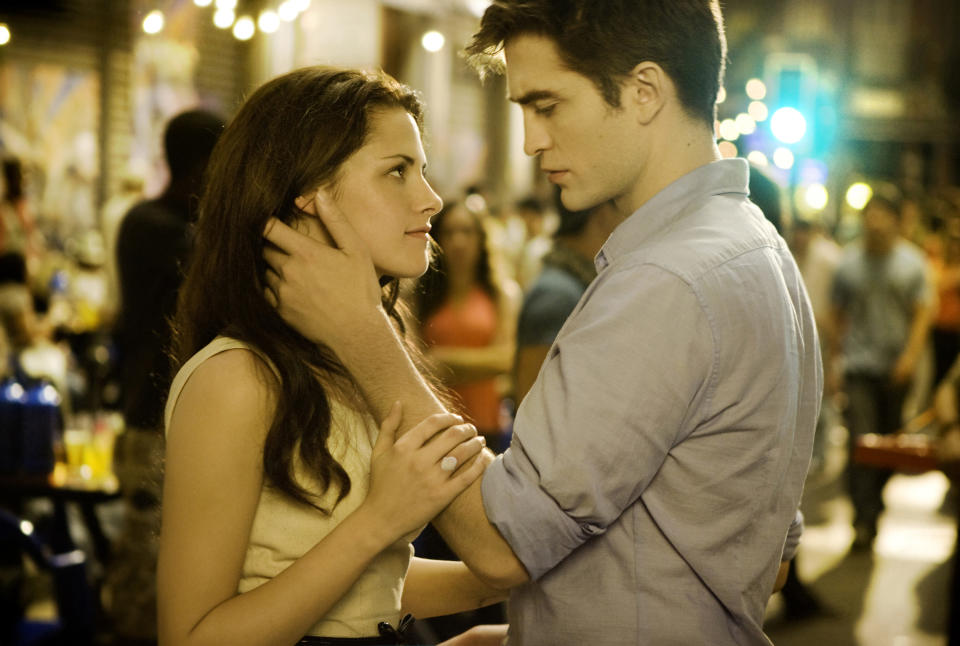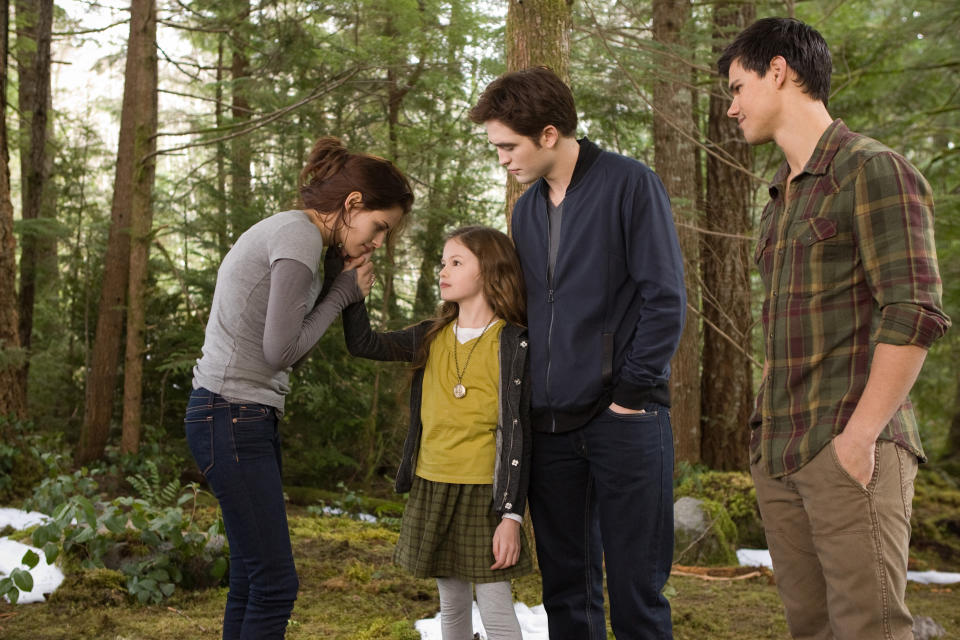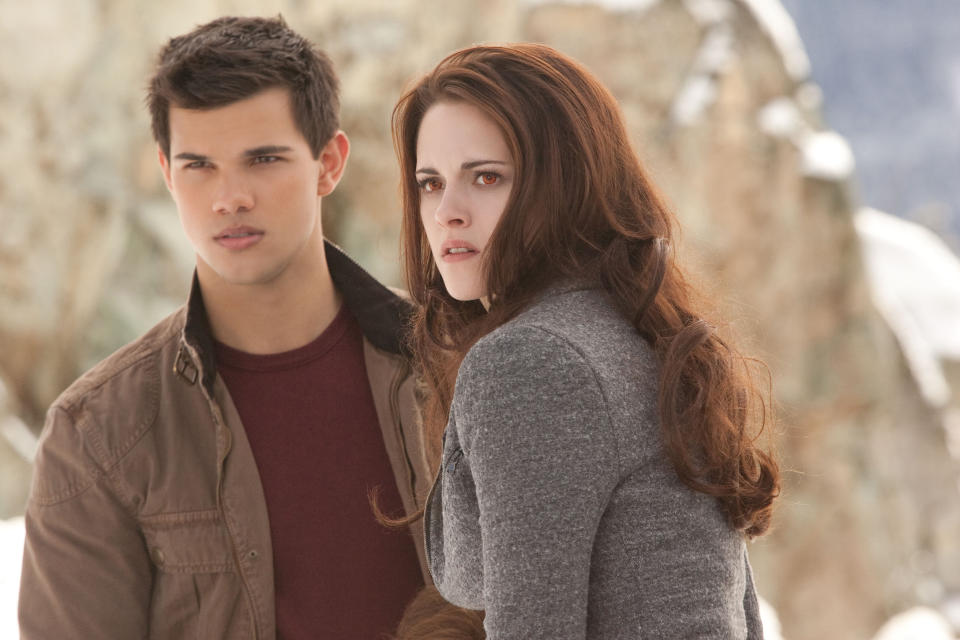‘Twilight’ the TV Series Needs to Be Better Than the Films

- Oops!Something went wrong.Please try again later.
- Oops!Something went wrong.Please try again later.
- Oops!Something went wrong.Please try again later.
Just as “Harry Potter” will get a TV remake and “The Hunger Games” will see a prequel, all the old YA franchises from the late aughts are suddenly new again. Now, the most (in)famous book series from that period may soon follow, with “Twilight.”
Sources confirmed to IndieWire that Lionsgate TV is in early development on a show based on “The Twilight Saga,” Stephenie Meyer’s four-book series about the romance between clumsy high schooler Bella and sadboi emo vampire Edward. It’s early days with no network or streamer attached to the the project, which would be the second adaptation after the film series that began in 2008 starring Kristen Stewart and Robert Pattinson.
More from IndieWire
Meyer is expected to be involved in some capacity, and Wyck Godfrey and Erik Feig will executive produce. Sinead Daly is attached to write the show, which may be a full remake or an offshot of the original story. (Lionsgate TV declined to comment on the news to IndieWire.)
The “Twilight” series has had a strange journey in the cultural consciousness. The original books (2005-2008) and films (2008-2012) were wildly lucrative and successful: the books sold around 160 million copies worldwide, and the films grossed more than $3.4 billion in theaters. It developed a very passionate, very online fanbase, and the discourse around the franchise (remember the iconic Team Edward vs. Team Jacob wars?) reshaped how people engage in fandom.

Andrew Cooper
Critics were less impressed. The franchise’s massive fandom also faced a vocal and passionate contingent of haters who decried it as the worst thing to happen to literature, cinema, horror, vampires, women, and romance. And then there was another set of voices that backlashed the backlash, pointing to its blatant sexism and a dismissive tone toward anything deigned for teenage girls.
The films, particularly the first, have since been reevaluated and embraced. There’s the pitch-perfect casting of Stewart and Pattinson: they’ve both gone on to acclaimed careers, proving that they were awkward and stiff in the movies because they were playing awkward and stiff weirdos.
There’s the all-banger soundtracks, featuring music from Paramore, Death Cab For Cutie, Bon Iver, and Linkin Park. Most of all, the films have gained appreciation for their camp value and the many memes and iconic moments they spawned: “Bella! where the hell have you been loca?” “Hold on tight, spider monkey?” For the girls (and certain queer boys) who grew up with the franchise, these scenes are pure cinema.
Similar to Max’s “Harry Potter” show, the “Twilight” series would arrive in a world that has a clear vision of these characters and what their universe looks like; trying to make a new one resonate will be an uphill battle. However, “Twilight” does have a few advantages over J.K. Rowling‘s “Harry Potter;” for one, while Meyers may not be universally beloved, she also isn’t a vocal bigot.
And even the most Twihard Edward and Bella fan can probably admit that there are… glaring issues with the franchise, ones that could be addressed in a new show and make the project better.

Andrew Cooper
For one, although much of the “Twilight” backlash was motivated by misogyny, the IP also received a lot of criticism for the story’s sexism and anti-feminism. They had a point. The books’ central fantasy — being an average girl who’s swept off her feet by a brooding man devoted to her protection — isn’t the problem, but the specifics of Edward and Bella’s courtship often have a controlling tone. It gets better after the first book, but in the beginning he behaves like a stalker — secretly watching her while she sleeps, running hot and cold in his emotions — and it’s more scary than sexy. That could use a serious rethink, especially if it’s meant to support multiple seasons of a TV show.
There’s also the infamous Renesmee, the couple’s eventual daughter, played in the film by Mackenzie Foy and some horrifying CGI effects. In “Breaking Dawn,” the love triangle between Bella, Edward, and werewolf Jacob (Taylor Lautner, who unlike Pattinson and Stewart seems destined to do a cameo for the show) is resolved by having Jacob, a grown man, “imprint” (or essentially, fall in love with) the pair’s stupidly named baby.
The franchise strains hard to make this not creepy, explaining that werewolves imprint upon their soulmates and Jacob will act as a protector towards Renesmee before she grows up; it doesn’t work. Renesmee isn’t necessarily a character that needs to be deleted, but the whole imprinting scenario is best forgotten.
Less acknowledged during the franchise’s heyday (but widely discussed by the fanbase today) is Meyer’s poor handling of race, which manifested in a lily-white film series. Most infamous is the way it portrays indigenous people: it’s eventually revealed that Jacob isn’t technically a werewolf, but instead a shape-shifter whose powers come from his lineage of “ancient spirit warriors” in the Quileute tribe.
The Quileute are a very real native tribe, totaling about 2,000 people and located in the western area of Washington state, and the franchise’s reductive (to put it generously) portrayal had real-world impact on popular perception of their culture. Jacob’s character and the way werewolves work in the “Twilight” universe need a full overhaul, and the show would benefit from having indigenous writers on staff.

Andrew Cooper
Another element that can be scrapped is the backstory of Jasper (Jackson Rathbone), one of Edward’s vampire siblings who’s revealed to have willingly enlisted in the Confederate Army during the Civil War (he’s meant to be a good guy). More generally, the films could stand to have more diversity both in front and behind the camera, although Meyers’ purported involvement gives concern that won’t happen. In 2018, the first film’s director Catherine Hardwicke said in an interview that the author vetoed her attempts to make the cast more diverse.
The TV series will also face a significant existential issue: One of the peculiarities of “Twilight,” and arguably one of its charms, is despite its length and the dramatic premise of supernatural love… not a lot actually happens. A good 50 percent of the books are meandering descriptions of Bella’s mundane routines, with pages devoted to interactions with classmates and friends who are unimportant to Bella, Edward, and the story itself. Most conflicts are resolved almost immediately, with action taking place off-screen. The story’s infamous climax comes when two armies of vampires meet in a field, talk for a few minutes, and leave without fighting each other.
In some respects, this low-stakes sprawl is perfect for a story about teenage years, when everything feels dramatic even though it usually doesn’t actually matter. It’s also not the material of serialized drama. The films managed to cover pretty much everything that matters with two-hour run times apiece; if the show goes the remake route, the creative team would need to add a LOT to make it work. At the same time, devoting more time to vampire action would rob “Twilight” of what makes it “Twilight,” instead of “Buffy” or “True Blood” or “The Vampire Diaries” or hundreds of other teen vampire franchises.
Is a “Twilight” TV show necessary? Almost certainly not. But, considering how almost every IP that people remember will eventually be revived, there are worse choices. It’s a work that means a lot to a lot of people, with a flawed text that could easily be updated and made into a unique and potentially stronger creation.
And if the show is bad? We’ll always have vampire baseball.
The Hollywood Reporter first reported the news of the “Twilight” TV show.
Best of IndieWire
Sign up for Indiewire's Newsletter. For the latest news, follow us on Facebook, Twitter, and Instagram.

